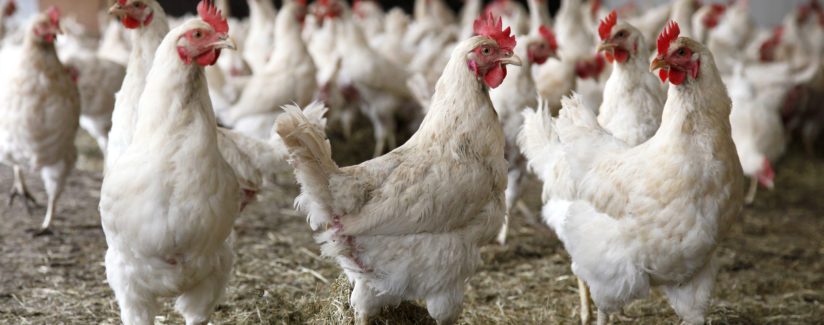
Get Up To Speed on Fast Growing Chickens
A century ago, it took about four months to grow a chicken to a weight of three pounds. Today, a chicken raised for meat, known as a broiler, grows to twice the size in half the time. Geneticists say it’s a triumph of breeding and allows for the production of more meat in less time using fewer resources. Others have concerns about animal welfare, saying fast growth is hard on the birds.
To learn more, we turned to a trio of experts in the field, Dr. Sacit Bilgili, Professor Emeritus, Department of Poultry Science, Auburn University; Dr. Patricia Hester, Professor of Animal Sciences, Purdue University; and Dr. Bruce Webster, Professor and Extension Coordinator, Department of Poultry Science, University of Georgia.
Some say chickens grown for meat put on weight too fast, which causes mobility problems for the bird. What’s your view of the situation?
Dr. Bilgili: The meat-type chickens (broilers) are bred specifically to grow fast and to build a lot of muscle. Growth rate and muscle yield are traits broilers are bred for. Breeding programs must balance weight and skeletal robustness. In fact, we have seen a steady improvement in leg problems since the 1980s. However, given the number of birds produced, there will always be a few birds with skeletal defects and gait problems. These birds should be culled from the rest of the flock. Culling sick and wounded birds humanely is a critical component of animal welfare programs that all farmers should adhere to.
Dr. Webster: It’s a problem that was more prevalent in past decades than it is now. It is related to rapid growth. Every large flock will have a few birds with impaired walking ability, but it should be a small percentage. I agree with Dr. Bilgili – birds like this should be humanely culled immediately.
Dr. Hester: Broilers today are bred for rapid growth rate and increased breast meat yields. These modern strains of broilers are physiologically and genetically distant from the ancestors of the Red Jungle Fowl. Not only have their genetics and physiology changed, but the behavior of these broiler chickens has also been altered. The metabolic demands for rapid growth in broilers are huge, leaving less energy for activity. Research shows broilers spend about 76 percent of their time sitting, 7 percent of their time standing idle on their feet, 3.5 percent standing preening, and 4.7 percent of their time standing eating. These chickens have enormous appetites feeding over 50 times in a 24-hour period. [1]
Are slower growing lines of chickens available?
Dr. Hester: Breeding companies do have slower growing lines of chickens. “Heritage lines” or slow-growing chickens are more active than the rapidly-growing genetic lines. They require more feed to gain weight, produce a smaller amount of breast meat, and can take twice as long to reach market weight. It costs the farmer more to raise these types of broilers, therefore the meat is more expensive at the grocery store or restaurant. It is suspected that the carbon footprint or impact on the environment would be less favorable for the slower-growing chickens. The current demand for these genetic lines are not high among purchasers of chicken meat, which is why farms primarily use the lines selected for rapid growth.
What are the trade-offs of raising the slower growing chickens?
Dr. Webster: Slower growing lines of chickens are available but they cannot compare to high-yielding strains of broilers for cost- and energy-efficient production of poultry meat products. As Dr. Hester indicates, due to their inherent inefficiencies, they are more expensive to grow, resulting in more expensive products that would be harder for people with low incomes to purchase. In addition to the increased environmental impact due to their slower growth and poorer feed conversion efficiency, their higher activity levels would make it difficult to house them at the densities possible with modern broiler chickens, further increasing costs.
It is hard to imagine what it would take to supply the current need for poultry meat products using slow growing lines of chickens. Slower growing chickens have some appeal in free range or pastured poultry systems where their higher tendency to be active may stand them in good stead. Products from such systems appeal to some individuals who are willing and able to pay the extra price.
Dr. Bilgili: There are many genetic strains available to the producers to choose from based on their target markets and business plans. This includes fast and slow-growing broiler strains, as well as those with low or high breast muscle yields. Given the expansion of food service and growing consumer appetite for breast muscle (i.e., white meat), the market economics will necessitate the use of fast-growing strains.
What it means
Broiler chickens grow at different rates, depending on the breed and genetics of the birds. Farmers may choose to raise slower or faster growing birds, depending on several factors. Shoppers can also choose to purchase meat based on what aligns with their values.
[1] Weeks et al., 2000, Applied Animal Behaviour Science 67: 111




























